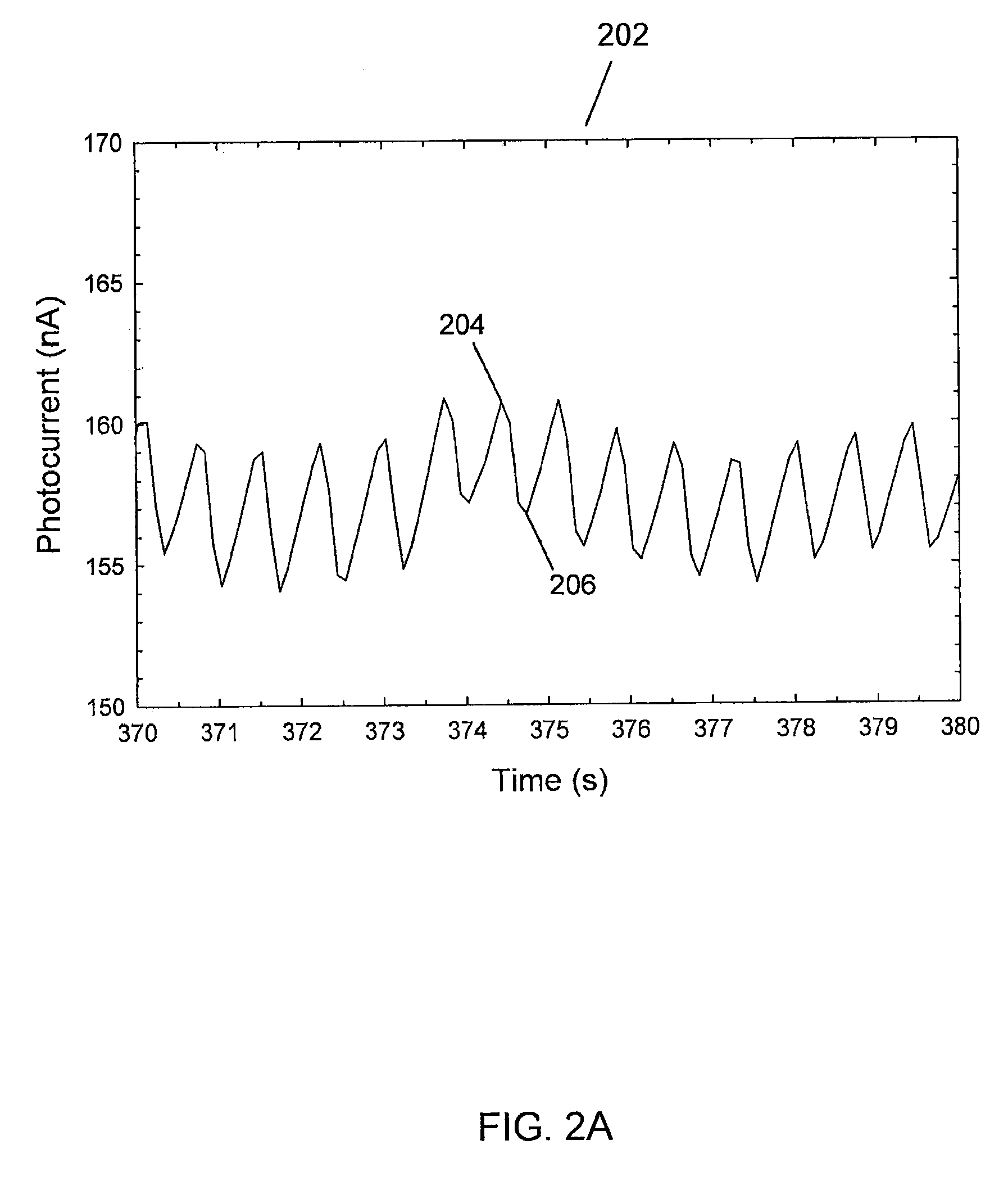Method and System for Non-Invasive Blood Glucose Detection Utilizing Spectral Data of One or More Components Other Than Glucose
a technology of blood glucose and spectral data, applied in the field of non-invasive blood glucose detection, can solve the problems of serious damage to many of the body's systems, including the eyes, kidneys and heart, and the economic burden of diabetes for individuals and society as a whole, and many diabetics to not be as diligent as they should be in achieving good blood glucose control
- Summary
- Abstract
- Description
- Claims
- Application Information
AI Technical Summary
Benefits of technology
Problems solved by technology
Method used
Image
Examples
example
[0033]FIG. 3 shows the NIR spectrum of water between 850 nm to 1100 nm. A strong positive peak is seen between about 920 nm and 1070 nm. The spectrum was taken with a Perkin-Elmer™ Lambda-14™ Double Beam UV-Vis-NIR (190 nm to 1100 nm) spectrometer. The scanning speed was 30 nm / min, the spectrum resolution was 4 nm, and one data point was collected per nm. The reference was the air and the sample was HPLC grade water in a quartz cuvette with 1 cm light path. The baseline absorbance of the spectrum, about 0.05, is due to reflections from two air / quartz interfaces and two water / quartz interfaces.
[0034]FIG. 4 shows the absorbance spectrum of a 1250 mg / dL solution of alfa-D(+)-glucose in HPLC grade water, and FIG. 5 shows the absorbance spectrum a 2500 mg / dL solution of alfa-D(+)-glucose in HPLC grade water. The two spectra were taken under the same condition as the water spectrum in FIG. 3, except that the quartz cuvette containing HPLC grade water was used as the reference. To minimize...
PUM
 Login to View More
Login to View More Abstract
Description
Claims
Application Information
 Login to View More
Login to View More - R&D
- Intellectual Property
- Life Sciences
- Materials
- Tech Scout
- Unparalleled Data Quality
- Higher Quality Content
- 60% Fewer Hallucinations
Browse by: Latest US Patents, China's latest patents, Technical Efficacy Thesaurus, Application Domain, Technology Topic, Popular Technical Reports.
© 2025 PatSnap. All rights reserved.Legal|Privacy policy|Modern Slavery Act Transparency Statement|Sitemap|About US| Contact US: help@patsnap.com



